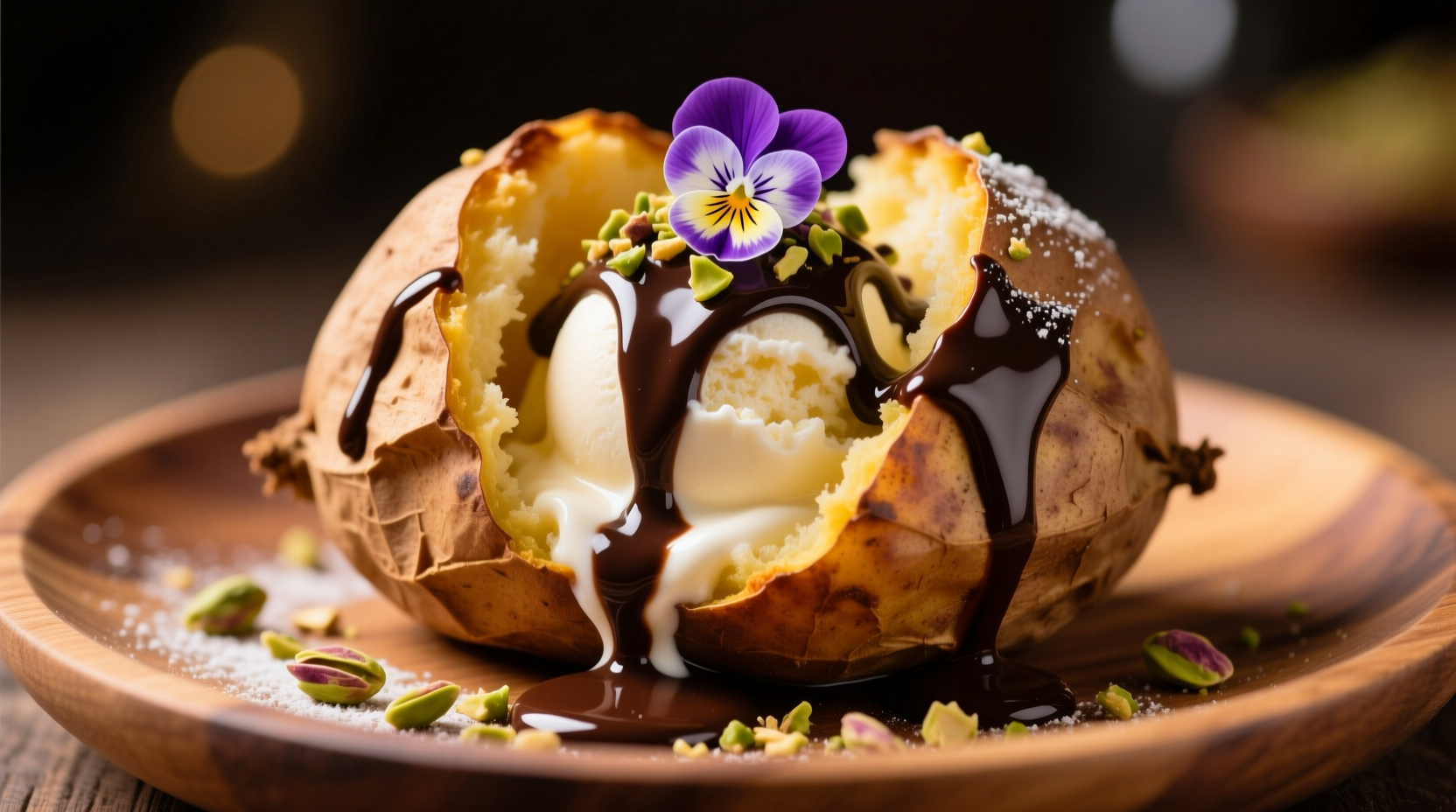Uncovering the Sweet Secret Behind Idaho's Most Misunderstood Dessert
When you hear "Idaho Ice Cream Potato," your first thought might be confusion. How can ice cream and potatoes possibly combine? The truth might surprise you: this beloved regional treat contains absolutely no potato. Instead, it's a creative dessert that pays homage to Idaho's identity as America's potato powerhouse through clever presentation.
Why This Dessert Has Nothing to Do With Potatoes
The Idaho Ice Cream Potato is a testament to culinary creativity meeting agricultural pride. Created in the small farming community of Shelley in eastern Idaho, this dessert uses simple ingredients transformed into something extraordinary:
| What People Expect | What You Actually Get |
|---|---|
| Starchy potato base | Vanilla ice cream foundation |
| Savory preparation | Sweet dessert experience |
| Traditional potato dish | Creative ice cream presentation |
| Idaho agricultural product | Idaho agricultural tribute |
This contrast explains why visitors to Idaho are often delightfully surprised when they discover the truth behind this menu staple. The dessert's name serves as a playful wink to Idaho's potato farming legacy rather than describing its ingredients.
The Sweet History: How Ice Cream Became a "Potato"
The Idaho Ice Cream Potato's story begins in the 1980s in Shelley, Idaho—a town surrounded by potato fields in Bonneville County. Local restaurants created this dessert as a whimsical tribute to the region's primary crop. According to the Idaho Tourism Commission, the dessert gained popularity through community events celebrating the potato harvest.
By the early 2000s, the treat had become so iconic that Shelley established an annual Ice Cream Potato Festival, drawing thousands of visitors each August. The festival features ice cream potato eating contests, recipe competitions, and even ice cream potato-shaped crafts, cementing the dessert's place in Idaho's cultural identity.

How to Make Authentic Idaho Ice Cream Potato at Home
Creating this regional specialty requires no special equipment—just attention to presentation. Here's the traditional method perfected by Idaho restaurants over decades:
Essential Ingredients
- High-quality vanilla ice cream (slightly softened)
- Heavy whipping cream (chilled)
- Unsweetened cocoa powder
- Chocolate syrup
- Finely crushed chocolate cookies
Step-by-Step Preparation
- Shape the "potato": Scoop softened vanilla ice cream into oval shapes resembling small potatoes
- Create the "dirt": Mix crushed chocolate cookies with cocoa powder in a 3:1 ratio
- Freeze the shapes: Place ice cream ovals on parchment paper and freeze for 1 hour
- Add texture: Just before serving, roll each frozen oval in the cookie-cocoa mixture
- Final touch: Drizzle with chocolate syrup and add a small sprig of mint as "potato vine"
The magic happens in the presentation—when served in a small cast-iron skillet or garden trowel (as many Idaho restaurants do), the illusion becomes complete. According to culinary historians at the Idaho State Historical Society, this attention to detail transformed a simple ice cream treat into a regional icon.
Where to Experience the Real Deal in Idaho
While you can make Idaho Ice Cream Potato at home, nothing compares to tasting it where it originated. The dessert remains most authentic in eastern Idaho, particularly in:
- Shelley: The birthplace, especially at the annual festival in August
- Idaho Falls: Several family-owned restaurants feature it year-round
- Blackfoot: Known for creative variations with local huckleberry sauce
It's worth noting that this dessert remains relatively unknown outside Idaho's borders. As the Potato Commission explains, "The Idaho Ice Cream Potato is a hyper-local tradition that showcases how agricultural communities celebrate their heritage through food." You won't find it on menus in Boise or western Idaho with the same frequency as in the potato-growing regions of the eastern part of the state.
Modern Twists on a Classic Treat
While traditionalists prefer the classic vanilla version, contemporary Idaho restaurants have developed creative variations that maintain the potato illusion while introducing new flavors:
- Huckleberry Swirl: Idaho's state fruit swirled into the ice cream
- Root Beer Float Potato: Using root beer ice cream for a regional soda twist
- Seasonal Variations: Pumpkin spice in fall, mint chocolate in summer
- Gluten-Free Options: Using crushed chocolate wafer cookies instead of traditional cookies
These innovations demonstrate how regional food traditions evolve while maintaining their cultural significance. Food anthropologists note that such adaptations help preserve culinary heritage by making it relevant to new generations.
Why This Dessert Matters Beyond the Sweet Taste
The Idaho Ice Cream Potato represents something deeper than just a clever dessert—it embodies how agricultural communities transform their identity into shared experiences. In a state where potatoes generate over $1.3 billion annually according to the Idaho State Department of Agriculture, this dessert serves as edible storytelling.
Unlike commercial food trends that come and go, the Idaho Ice Cream Potato has maintained regional popularity for decades because it connects people to place. It's not just what's on the plate, but the story behind it—a reminder that food traditions often say more about community than ingredients.











 浙公网安备
33010002000092号
浙公网安备
33010002000092号 浙B2-20120091-4
浙B2-20120091-4